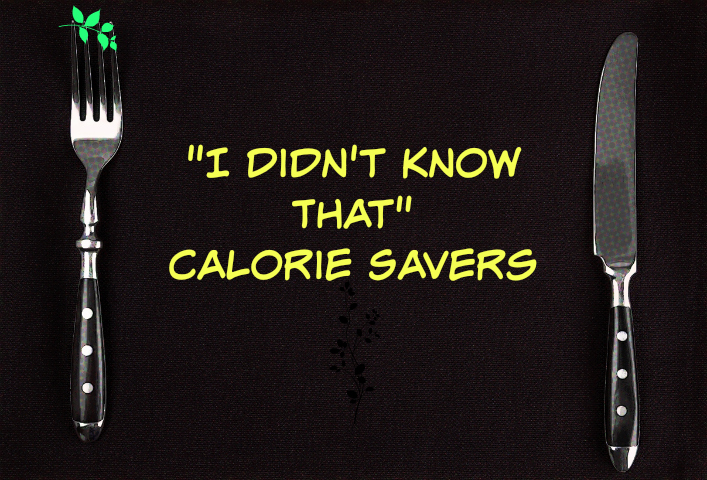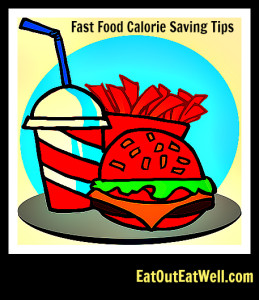-
Don’t be duped by turkey, fish, and veggie burgers and sandwiches. They sound healthier and less caloric than beef, but that might not be the case. At Red Robin a grilled turkey burger has 578 calories, 29g fat. Burger King’s Premium Alaskan Fish sandwich has 530 calories, 28g fat while a Whopper Jr. without mayo has 260 calories, 10g fat. A Sedona Black Bean Burger at TGI Fridays has 870 calories, 49g fat.
-
Chinese food — even broccoli has calories. If you think you’re getting off easy because of all of the vegetables in Chinese food, think again. There are 466 calories in a cup and a half of beef and broccoli stir-fry (and about a day’s worth of sodium). One cup of fried rice has 333 calories. If you include a vegetable spring roll for 63 calories and three fortune cookies for about 100 calories, your meal clocks in at around 1000 calories. Cut down a little bit, you probably won’t even notice.
-
Avoid eating from a large open bag. Count out your chips, crackers, and pretzels or only eat from a single portion size bag. Who can stop when there’s an open bag of salty, crunchy food right in front of you? It’s amazingly easy to keep mindlessly eating until the bag is empty. A dive to the bottom of a 9 ounce bag of chips (without dip) is 1,260 calories. One serving, about 15 chips, is 140 calories.
calorie savers
Fast Food Calorie Savers
Would you like to save a few calories when you eat at fast food (or fast casual) restaurants?
Here are some easy small changes you can make that don’t drastically change your meal (and they don’t include skipping dessert or having a cup of broth instead of a burger).
Here are some suggestions:
- Pay very careful attention to sauce and dressings: “Special” sauces that top burgers, mayo, sour cream, and salad dressing are all high in calories and fat. The amount you get on your sandwich or salad often depends on the “hand” of the person pouring it on. So ask for the sauce or dressing on the side and add it yourself or dip (not dunk) sparingly
- Opt for chicken or fish as long as it’s not called crispy – which is just an alias for fried. Order it grilled, roasted, or broiled.
- Order your burger without bacon or cheese: One slice of bacon adds about 43 calories, but how many sandwiches come with only one slice? One slice of American cheese clocks in at 94 calories.
- Do you really need to have fries or onion rings? Skip them or order salad, fruit, or a baked potato with dressing/sauce/toppings on the side instead. If you absolutely must have fries, order a small or a kid’s size. Large fries can tack on around 500 calories.
- Avoid sweetened drinks: Soda isn’t the only sugary drink. Sweetened tea, sports drinks, non-diet flavored water, juice, flavored milk, and shakes fit the bill, too. A 12 ounce can of coke has 140 calories and 39 grams of sugar. Eight ounces of orange juice has 110 calories and 25 grams of carbs.
- In general, order regular instead of large sizes: It may seem like a good “value” but there are lots of extra calories, fat, and sugar in beefed up sizes.
- Avoid combo specials: they might have wallet appeal but you get, on average, 55% more calories for 17% more money. What’s more important, your waistline or your wallet?
Is There A Way To Know When I Should Eat?
 When should I eat? That’s the age-old question that many of us ask ourselves most days of the week! What would you say: “when I’m hungry” or maybe “when I want to”?
When should I eat? That’s the age-old question that many of us ask ourselves most days of the week! What would you say: “when I’m hungry” or maybe “when I want to”?
It’s not always an easy question to answer even though it seems like it should be intuitive. It can be, if you learn to listen to your body’s cues. You can also learn to stop, check in with yourself, and use a tool like the hunger scale to help you evaluate how hungry you really are.
Your Need For Fuel
Physical hunger is a basic survival mechanism. It lets your brain know that your body needs nourishment and energy and then prompts you to eat for fuel. We’re born with this ability; think about babies and how they cry when they need food and how they stop eating when they’re full.
But many of us eat so frequently that we never get to the point of letting our bodies knock on the door to tell us that they’re hungry and really need to be fed. We just eat.
Those of us who struggle with our weight might not even know – or remember – what hunger feels like. If you eat just to eat – rather than in response to hunger cues — you can become disconnected from the signals that let you know when you’re actually hungry and when you’re full.
The Hunger Scale
There’s a hunger scale you can use to help identify how hungry you are and when it’s reasonable to eat. The scale goes from 1 to 10 with 1 being ravenous and 10 being so full that you feel sick.
The Scale:
- You’re ravenous and too hungry to give a hoot about what you eat
- You’re starving and absolutely must eat immediately because you’re irritable, cranky, and have no energy
- You’re hungry and the urge to eat is strong
- Your hunger pangs are signaling the first signs of hunger; you’re a little hungry
- You’re satisfied – not hungry but not full and you’re not aware of food in your stomach
- You’re fully satisfied and are aware of food in your stomach
- You’re very full, your stomach feels stretched, and you’re past the point of satisfaction but can still find room for more
- You’re uncomfortable because your stomach is too full and you really wish you hadn’t had those last few bites
- You’re stuffed, very uncomfortable, and your clothes feel very tight – that belt buckle or snap on your jeans doesn’t stand a chance
- You’re beyond full and feel sick, miserable, and you don’t want to move
Calorie Savers
Try asking yourself, “What number am I at?”
- If you’re above a number 5 you’re not physically hungry and something else is triggering your eating.
- If you’re at number 4 you can wait to eat or eat a little bit.
- If you’re at a 3 – it could go to 2 — it’s a good time to heat – have you noticed that food tastes pretty good when you’re hungry?
- If you’re at number 1 you really need to eat — but pay attention to what you’re doing. When you’re starving you don’t care too much about what or how much you eat – and usually end up shoveling food in as quickly as possible – which can result in overeating (pigging out) and ending up at a 7 and up.
- You should generally stop eating if you’re at a 6, sometimes a 7.
- Gauge your hunger. If you’re only a little hungry, only eat a little. Preventive eating – or eating because you might be hungry in a little while – can cause you to pack in a lot of calories.
You’ll be able to find 49 more calorie saving tips in my soon to be released book. Sign up in the box on the right to be notified by email when it becomes available and get your free copy of “How To Decode A Restaurant Menu’s Words And Phrases” as a bonus.

